- Author: John Miskella
- Posted by: Guy B Kyser
Water hyacinth (Eichhornia crassipes (Mart.) Solms)) is a perennial free-floating aquatic plant species native to the Amazon region of South America. It has become invasive around the world, including the Sacramento-San Joaquin Delta in central California. Water hyacinth can disperse and colonize new locations by floating on the water surface. The intertwined root and leaf structure allows the plants within a mat to remain held loosely together, while occasionally separating into smaller mats (Figure 1).
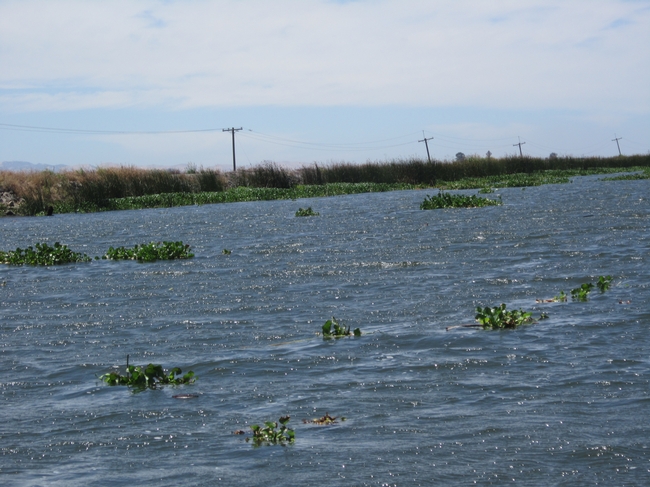
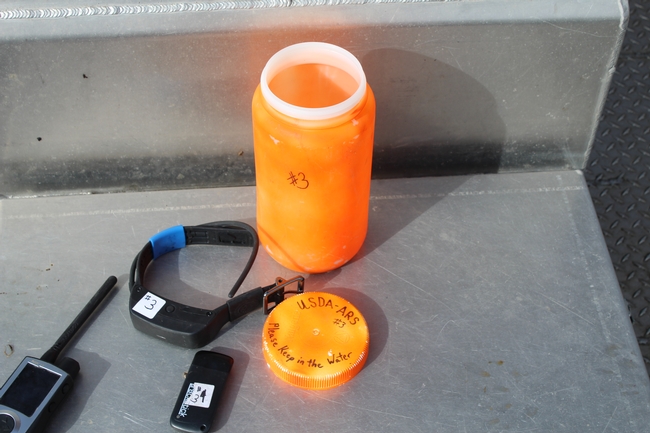
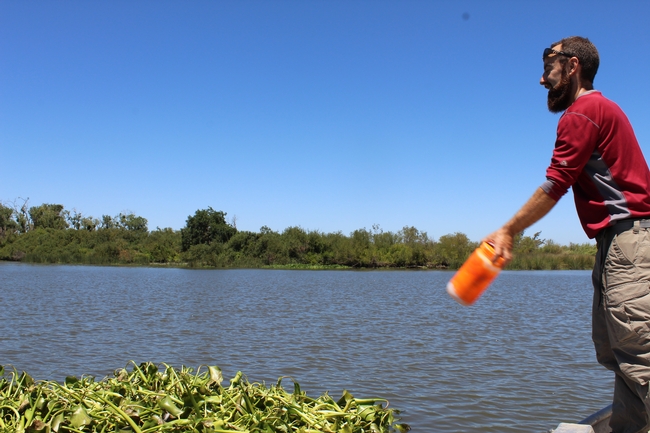
The water discharge, in ft3/s, was obtained from USGS stream gages located throughout the Delta. The movement of each bottle was compared to the wind and water movement during the period the bottle was deployed. When the direction of the plant mat, water, or wind changed by more than 10°, this segment with a different heading was analyzed as a separate run (Figure 4).
The plant mat direction, recorded as a compass heading, was compared to the direction of the water movement using simple linear regression (SAS 9.4, 2012). The direction of water movement explained a significant proportion of the variance in direction (R2 = 0.8218, F(1, 77) = 355.07, p < .0001), while the direction of wind movement failed to explain a significant proportion of the variance in direction (R2 = .0163, F(1,77) = 1.28, p < .2617). The direction of water movement, including stream flow and tides, had a much greater effect on the direction of water hyacinth mats than the wind does (Figure 5).
Although this area of the Delta is 50 miles inland from the Pacific Ocean, tides have a strong influence on the water there, and plants that are floating in the Delta water. In Figure 6, the plant mat moves with the water to the northwest. Both the flow from the San Joaquin River and the tide are flowing out towards San Pablo Bay. When the tide starts to come in, the plant mat reverses course, heading upstream against the flow of the river. A similar pattern can be seen in Figure 7, with the plant mat changing direction as the flow of water changes direction. The plant mats don't travel long distances in the same direction at once, but move back and forth with the tides, frequently getting caught on the bank. Plant mats become entrained (caught on something) for a period of time, are moved by the water a short distance, then get caught again.

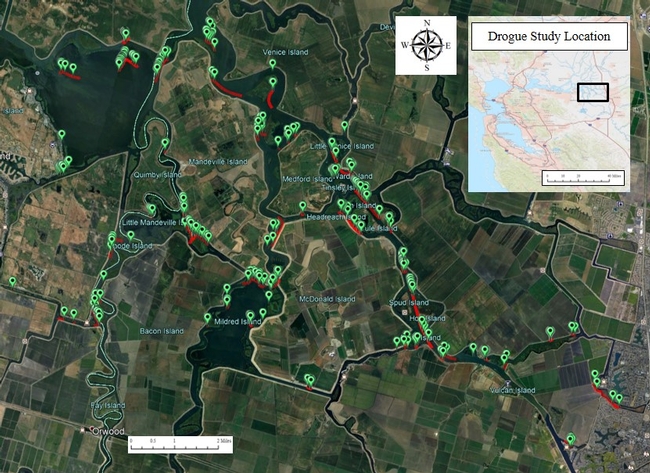
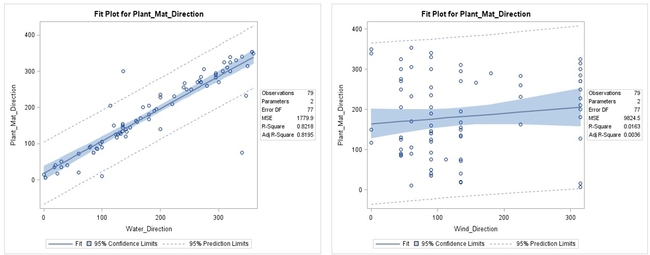
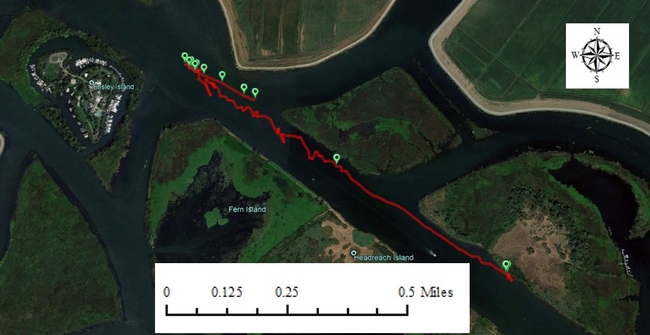
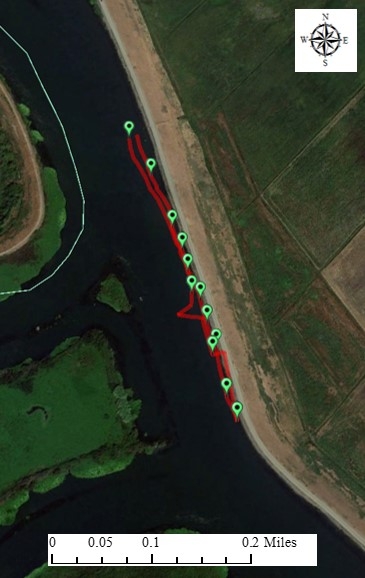


The device was a 2 liter Nalgene bottle, which was buoyant when sealed. We placed a collar made by Sportdog (https://store.sportdog.com/dog-tracking/tek) in the Nalgene bottle. When we wanted to retrieve the bottle, we used to receiver made by Sportdog, also available at sportdog.com, to locate the floating bottle. In addition, we placed a GPS recorder, made by Trackstick (http://trackstick.com/products/mini/index.html) in the bottle. After the bottle was retrieved, we downloaded the data from the Trackstick to a computer. This data could be displayed graphically, as in the Google Maps images in the blog post, or as a table.
I hope you are all doing well. I'm settling in (drinking from firehose)in my new appointment at UF/IFAS.
We're being tasked with a a small UAS project at Rodman Reservior to map floating plants.
I find your methods for deploying GPS drogues exceptionally useful and would like to learn your protocols and see if there are opportunities for collaboration. John I remember your presentation on this at WSWS and put it in my queue to follow up.
Hoping I might be able to host a video conference with you all soon. thank you much and have a great day.
Thank you for your attention
I hope you are all doing well. I'm settling in (drinking from firehose)in my new appointment at UF/IFAS.
We're being tasked with a a small UAS project at Rodman Reservior to map floating plants.
I find your methods for deploying GPS drogues exceptionally useful and would like to learn your protocols and see if there are opportunities for collaboration. John I remember your presentation on this at WSWS and put it in my queue to follow up.
Hoping I might be able to host a video conference with you all soon. thank you much and have a great day.
Thank you for your attention